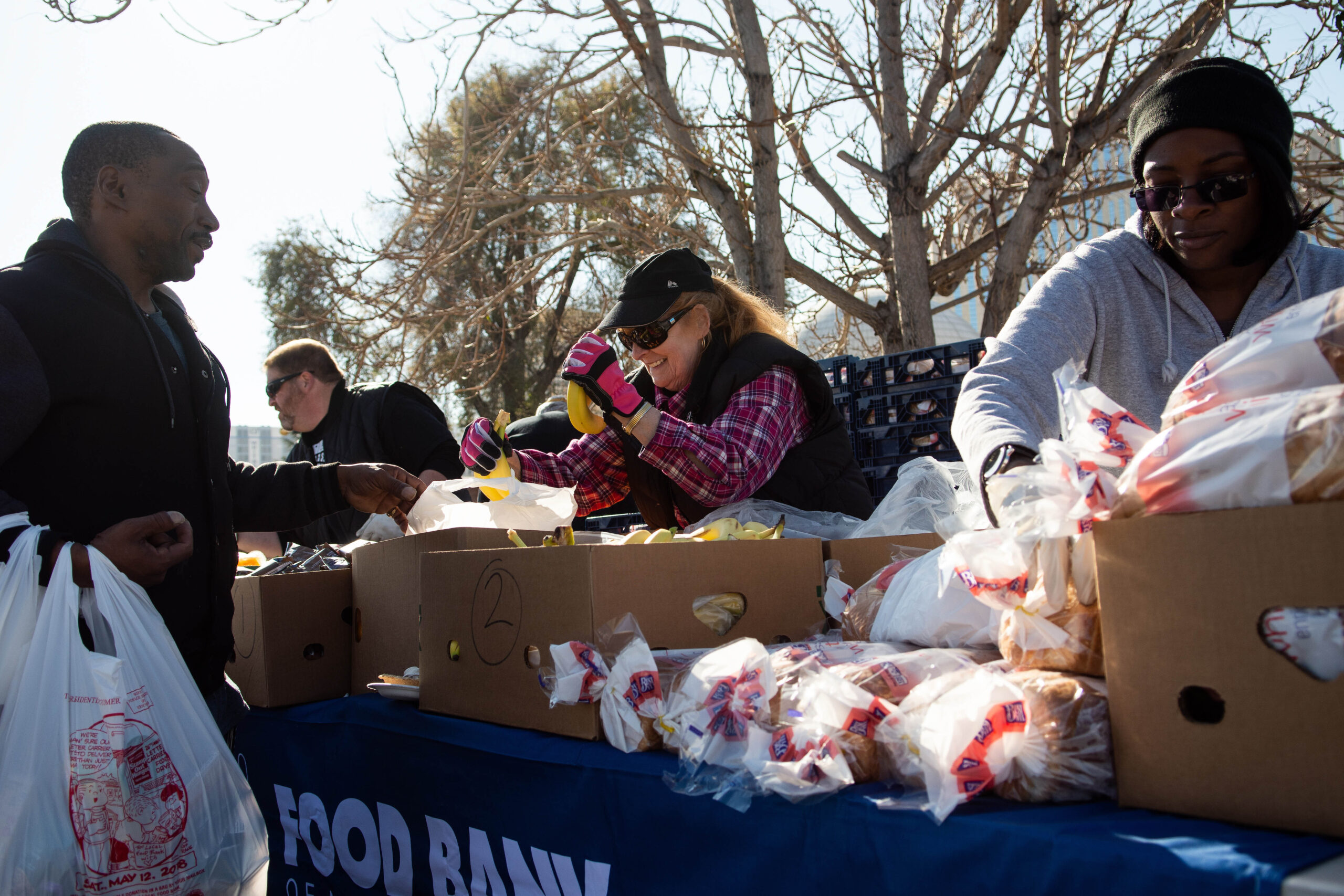The Trump administration informed Nevada food banks Tuesday that it was suspending emergency food assistance programs poised to deliver more than 1.3 million pounds of food, at a time when food bank usage in the state remains higher than pre-pandemic levels.
That amount of food could provide more than 1 million meals.
That cancellation comes on top of the Department of Agriculture’s termination of a pandemic-era program that purchased food from local farmers and gave it to food banks for distribution — leaving food banks at both ends of the state with unexpected holes in their budget and supply of food.
At Three Square, the food distribution network for Southern Nevada, CEO Beth Martino learned Tuesday the Department of Agriculture was canceling several scheduled deliveries totaling nearly 1 million pounds of food — enough to feed between 16,000 and 25,000 families of four. The same day, leaders at the Food Bank of Northern Nevada learned that federal shipments of 350,000 pounds of food had been canceled.
The food comes from The Emergency Food Assistance Program (TEFAP), created in 1981 for the Department of Agriculture to provide surplus food to states for distribution through the statutory authority of the Commodity Credit Corporation (CCC), which finances federal commodity programs. Beyond annual allocations, TEFAP receives additional funding each year from the CCC for emergency food distributions. In fiscal year 2024, TEFAP received an additional $943 million to purchase food from U.S. growers and producers for emergency food assistance.
But the Trump administration has paused $500 million of funding from this TEFAP pool nationally, according to Reuters, leaving food banks short of the amount of food they had been counting on.
The cuts come in addition to the Trump administration’s early March termination of the Local Food Assistance Purchase Cooperative Agreement Program (LFPA). Nevada had been allocated $3.9 million in LFPA funds that have now been canceled, compounding food banks’ financial crunch. The Food Bank of Northern Nevada anticipated purchasing 1.1 million pounds of food through LFPA, meaning combined federal cuts are leaving it 3.1 million pounds short.
The Food Bank of Northern Nevada distributed 25 million pounds of food in total last year — meaning in just a few weeks, the Trump administration has cancelled more than 12 percent of its expected annual food budget, assuming distribution is similar this year.
In Southern Nevada, Martino said her food bank network received about 5 million pounds of food between TEFAP and LFPA last year — representing 10 percent of the 50 million pounds of food it distributed.
The Department of Agriculture did not immediately respond to a request for comment.
Food insecurity in Nevada remains higher than pre-pandemic levels, largely because of increased food prices and the expiration of pandemic-era benefits. In the North, the Food Bank of Northern Nevada serves 160,000 people each month — a figure that is 76 percent higher than before the pandemic. Feeding America, a nationwide network of food banks, estimates that 1 in 7 Nevadans — and 1 in 5 children in the state — faces hunger.
Jocelyn Lantrip, the director of marketing and communications at the Food Bank of Northern Nevada, said the organization received 2 million pounds of food from those federal programs in fiscal year 2025. The Food Bank of Northern Nevada had budgeted for an additional 2 million pounds for next fiscal year.
Now, leaders are left wondering how to make up the shortfall, particularly because TEFAP provides expensive food products such as protein, dairy and eggs, that can be difficult to source through other funding streams.
“Obviously that [2 million] is not happening,” Lantrip said. “One of the things that makes it more significant is the fact that the food that was canceled — the food that we’ve been getting through this program — is really valuable.”
Although Three Square had budgeted for a slighter smaller allocation of food from the federal government this year — and Martino emphasized that the organization is always looking for ways to supplement the federally funded parts of its budget — the program terminations are concerning.
And with rising grocery costs affecting the entire country, Martino said the frequency with which Southern Nevadans seek food assistance has increased as well.
“We are seeing more people who need help,” Martino said. “We’re also seeing the level of that need rise — so people who may have only needed help one or two months of the year are now needing help for half the year.”
In Congress, Nevada’s two senators signed onto a letter to Agriculture Secretary Brooke Rollins criticizing the TEFAP cut and inquiring about future cancellations of food orders. But in the meantime, food banks are continuing to serve Nevadans without their expected federal deliveries.
“It definitely has an impact on what we’re able to do,” Martino said.

